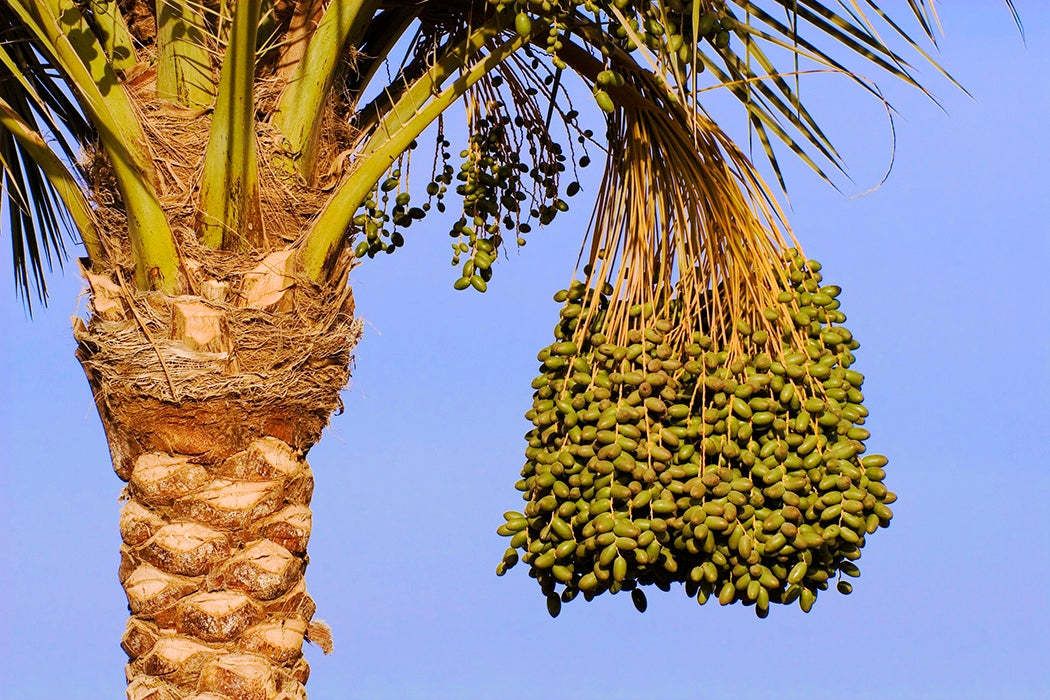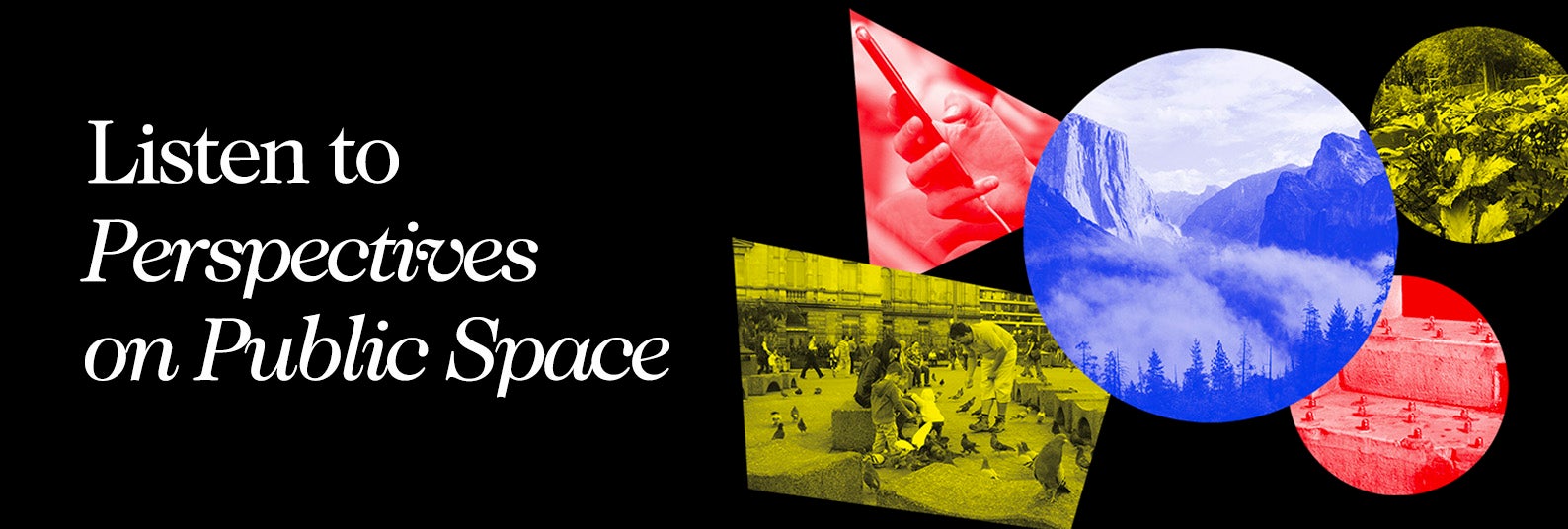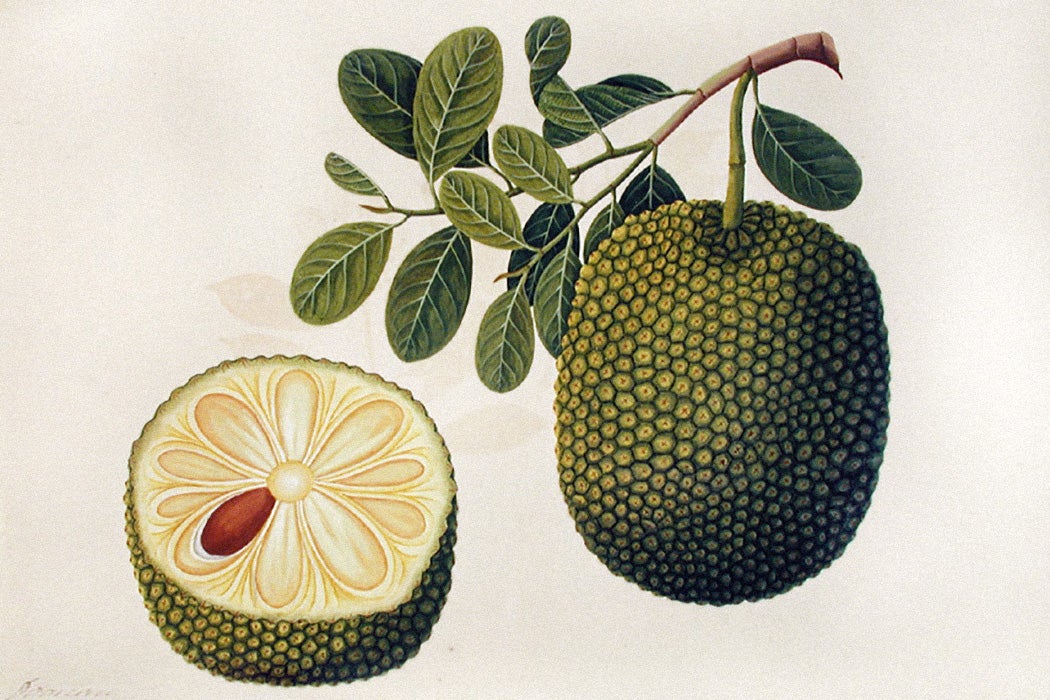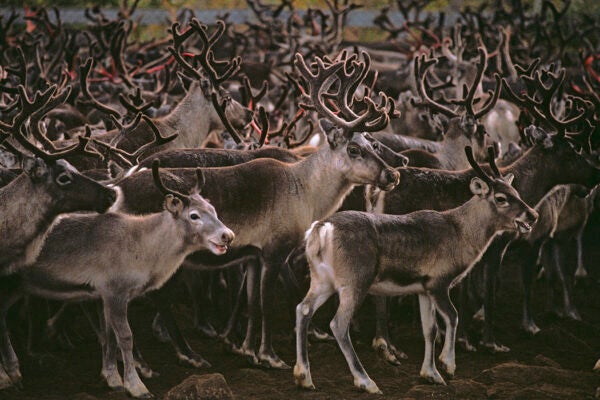Its fronds are strewn across churchyards worldwide during Palm Sunday processions to symbolize Christ’s last entry into Jerusalem, and palm leaves cover the Sukkot booths during the annual Jewish Feast of the Tabernacles as called for in Leviticus. Meanwhile, Muslims have long eaten its fruits to break the daily fast of Ramadan. Indeed, the date palm (Phoenix dactylifera), which the Prophet Mohammed said was “created out of the earth left over after the creation of Adam” (according to date expert Paul Popenoe’s translation), was and is a cultural and economic cornerstone species throughout much of the Islamic world.
Not surprisingly then, the UN Food and Agriculture Organization (FAO) reports that more than 75 percent of annual date production and a commensurate share of the almost $15 billion global date market come from the predominantly Muslim countries surrounding the Persian Gulf and west across North Africa, led by the world’s largest producer over the last years: Egypt. Perhaps more surprisingly, the United States rounded out the list of the top twenty world date producers in 2022. According to the US Department of Agriculture, nearly 80 percent of the national crop comes from southern California alone (the remaining twenty comes from Arizona).
How the date palm made its way west from its Persian Gulf “homeland” across the Sahara and on to the Coachella Valley is a tale of ingenuity, adaptation, and persistence in some of the harshest environments on Earth. It’s also a story with darker chapters, of empire(s) and expropriation, slavery, and yes, even tariffs.
Expropriation and Empire(s)
In the spring of 1927, USDA plant pathologist and date specialist Walter Tennyson Swingle joined a French-sponsored multinational research team sent to investigate the recently identified Bayoud (or Baioudh) fungal disease ravaging the prized Medjool (or Mejhoul) date palms from the Moroccan Tafilalet, which Swingle called the “greatest date oasis of Africa” in 1945 in the proceedings of the 22nd Annual Date Growers’ Institute. On the way, the team stopped for several days at the French Foreign Legion outpost at Bou Denib, “about 100 miles east” of their destination, to organize their military escort, since “the country was not yet fully pacified.” While there, Swingle befriended the local sharif, who took the scientist on a tour of Bou Denib’s 9,000-tree date palm oasis.
When Swingle discovered a small stand of uninfected Medjool trees on one plot, he asked the sharif if he could purchase some offshoots from the “mother” tree to send home, “as we did not then have this famous variety in our country.” Soon thereafter, a box of eleven offshoots were on their way to the American Southwest; the descendants of those trees now produce a quarter of all dates grown in the US and most of the Medjools—considered the “King of Dates” due to their size and sweetness—harvested worldwide.
Weekly Newsletter
Swingle’s accession was by no means the first such shipment sent to the US from points East. It wasn’t even Swingle’s first date importation venture; he had gone to French Algeria twice between 1898 and 1900 in search of the Rhars and Deglet Noor varieties, the latter a “sweet and nutty” cultivar that yields up to 300 lbs per tree per year, according to University of Arizona plant scientist Glenn C. Wright. The FAO has called it the “most popular variety in the EU.” In 1902, Swingle’s longtime friend and chief of the USDA’s Seed and Plant Introduction office, David Grandison Fairchild, sailed up the Persian Gulf to Baghdad collecting offshoots from what was then the largest date palm region on the globe. Several other USDA-sponsored and private date-collection expeditions to the region in the first decades of the twentieth century meant that by the 1930s Swingle could rightfully claim that “no country” had accumulated “such a complete collection of the choice [date] varieties (‘over one hundred’)” than the United States.
Why all of this effort on behalf of date palms? The easiest answer is that the USDA had been charged with supporting the development of agricultural industries in newly-settled regions of the west and south. These were places that couldn’t readily sustain the country’s traditional crops or where non-traditional ones (navel oranges, avocados, et al.) might encourage settlement and private investment, resulting ultimately in the substitution of domestic production for imports.
Date palms ticked all those boxes. As date-industry historian Charles C. Colley notes, the US consumed “over twenty million pounds of dates” at the turn of the twentieth century, most of which came from the Middle East and North Africa. Meanwhile, as Katherine Morrissey and Marcus Burtner argue in “Global Imaginary of Arid Lands: Early Twentieth-Century United States Botanists in Africa,” USDA scientists and others, like Robert Forbes, director of the University of Arizona’s agricultural experiment station, were convinced that access to water from artesian wells in the region, and eventual irrigation from the Colorado River and the Salton Sea, would ensure that date palms would thrive in the alkaline soils, Sahara-like temperatures, and low humidity of the Southern California and Arizona deserts. Moreover, both local landowners and institutions like the Southern Pacific Railroad, historian Natalie Koch points out, were on the lookout for potentially profitable industries which might increase land values and revenue.
From a more distant perspective, the US date palm project resembles similar efforts by European imperial powers in the late nineteenth and early twentieth centuries to transfer rubber, tea, cinchona/quinine, and other plants to their own colonies, where “modern” agricultural science combined with underpaid and often enslaved labor would in turn create lucrative industries. So, in addition to being an exercise in “economic nationalism” and “self-sufficiency,” as historian Thomas Isern puts it, the date-palm project might be seen as part of the “expansion of empire,” as historian Lucile Brockway posits.
Though US plant explorers like Swingle and Fairchild were very much aware of these European imperial efforts, they still believed the US could and would succeed in developing its own world-beating plant industries just as it was beating the “Old World” in railroads, steel, oil, autos, and other industries by collecting and improving upon pre-existing practices, substituting machines for physical labor wherever possible, and modernizing every step in the production, handling, and marketing processes. According to economic historians, they largely succeeded in achieving those goals. By the 1920s, “American producers” had “gained a reputation…for quality and consistency” in their horticultural crops “unmatched by their European counterparts,” write José Morilla Critz, Alan L. Olmstead and Paul W. Rhode.
The Ancient Roots of the “Tree of Life”
USDA plant explorers set out both to collect superior varietals overseas and to gather as much information as possible about the history of the entire date enterprise. As Forbes declared in 1900, “In the date-growing countries of the Old World the Arabs, and other races, have developed the date until in excellence and variety it corresponds with other cultivated fruits,” so “it is evidently necessary to avail ourselves of the centuries of Old World experience.”
“Millennia” would have been more accurate, as abundant archaeological evidence indicates that date palms were grown extensively in Mesopotamia as early as the fourth millenium BCE, making it one of the world’s oldest “domesticated” fruits according to date historian Roy Nixon. In fact, the Ancient Sumerians, and their Babylonian successors, mastered date-growing techniques that a modern orchardist would recognize.
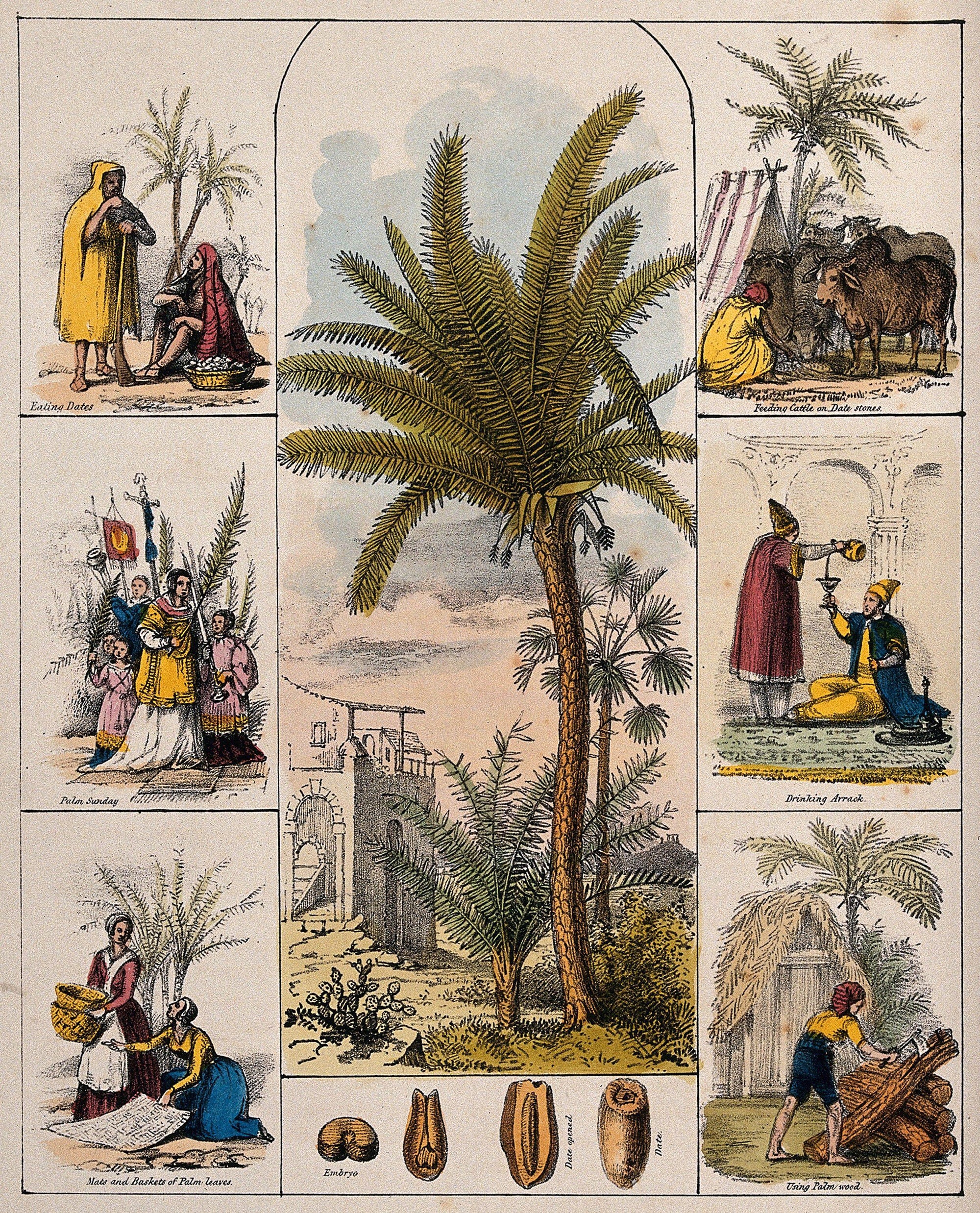
Date palms, for example, are dioecious, meaning the male and female reproductive organs grow on separate trees. As a result, palm groves left on their own to pollinate, with wind blowing male pollen onto female flowers, will eventually produce an equal number of seeds and thus trees from each “sex.” But since only female trees bear fruit, a 50–50 gender ratio is uneconomical to say the least. The Sumerians recognized this problem and devised a solution as early as 3300 BCE. Like modern growers, Sumerian orchardists, archaeologist Marcin Paszke contends, gathered pollen from the emerging inflorescences of male date palms in the spring and then climbed the female trees to fertilize the flowers by hand. This “allowed gardeners to reduce the quantity of male trees in the groves, as several male palms could now fertilize fifty or more females,” which “not only economised on space and labour but also ensured a better crop.”
Moreover, A. H. Pruessner contends, at least as early as the reign of the Babylonian Emperor Hammurabi, (r. 1792–1750 BCE), whose famous “law code” included four paragraphs (out of 282) “devoted to questions regarding the planting of date orchards,” the Babylonians had already mastered the art of selecting and replicating their best date varieties through clonal propagation, cutting genetically identical offshoots from the base of the “mother” palm and transplanting them to perpetuate and/or expand orchard production of a prized variety.
Meanwhile, the date palm was so prolific, and its breeding mechanisms were metaphorically considered so similar to that of humans, Popenoe writes, that the ancient Babylonians deemed it the “Tree of Life,” and included its image in temples and palaces throughout Mesopotamia. As date palm cultivation spread westward in succeeding millennia, it continued to carry cultural, ceremonial, and religious significance. Historian Asaph Goor tells us that when Moses and the Israelites stopped at the border of Ancient Israel after leaving Egypt—as relayed in the Hebrew Bible—they gazed down from Mount Nebo onto “the plain of the Valley of Jericho, the city of [date] palm trees.”
“What have the Romans ever done for us?”
How exactly those date palms got to the Levant from Mesopotamia is unclear, but there was a lively trade in all manner of goods between the Persian Gulf and the Mediterranean as early as the Middle Bronze Age (c. 2000–1500 BCE) by which time the Biblical Canaanites (Phoenicians) were already growing date palms along the Lebanese coast. Indeed, the Greek name for the Phoenician coastal city-states to the north of Judea—phoînix—meant “land of the dates,” and, as a result, in his path-breaking 1753 book on botanical nomenclature, Species Plantarum, Carl Linnaeus christened the date-palm with the binomial it still carries, Phoenix and dactylifera (Latin-Greek for “date” and “finger”/“bearing”).
We also “know from the Talmud that the Jews worked in date plantations during their 70-year exile to Babylon,” according to Sarah Sallon, a Jerusalem-based physician turned date specialist who theorizes that when these Jews returned to Israel, they brought back offshoots from “high-producing” Babylonian varieties. Whatever the pathway, by the Roman Era, Jews were famed throughout the Mediterranean for their dates, which they grew along the Jordan River from the Sea of Galilee one hundred miles south to the Dead Sea.
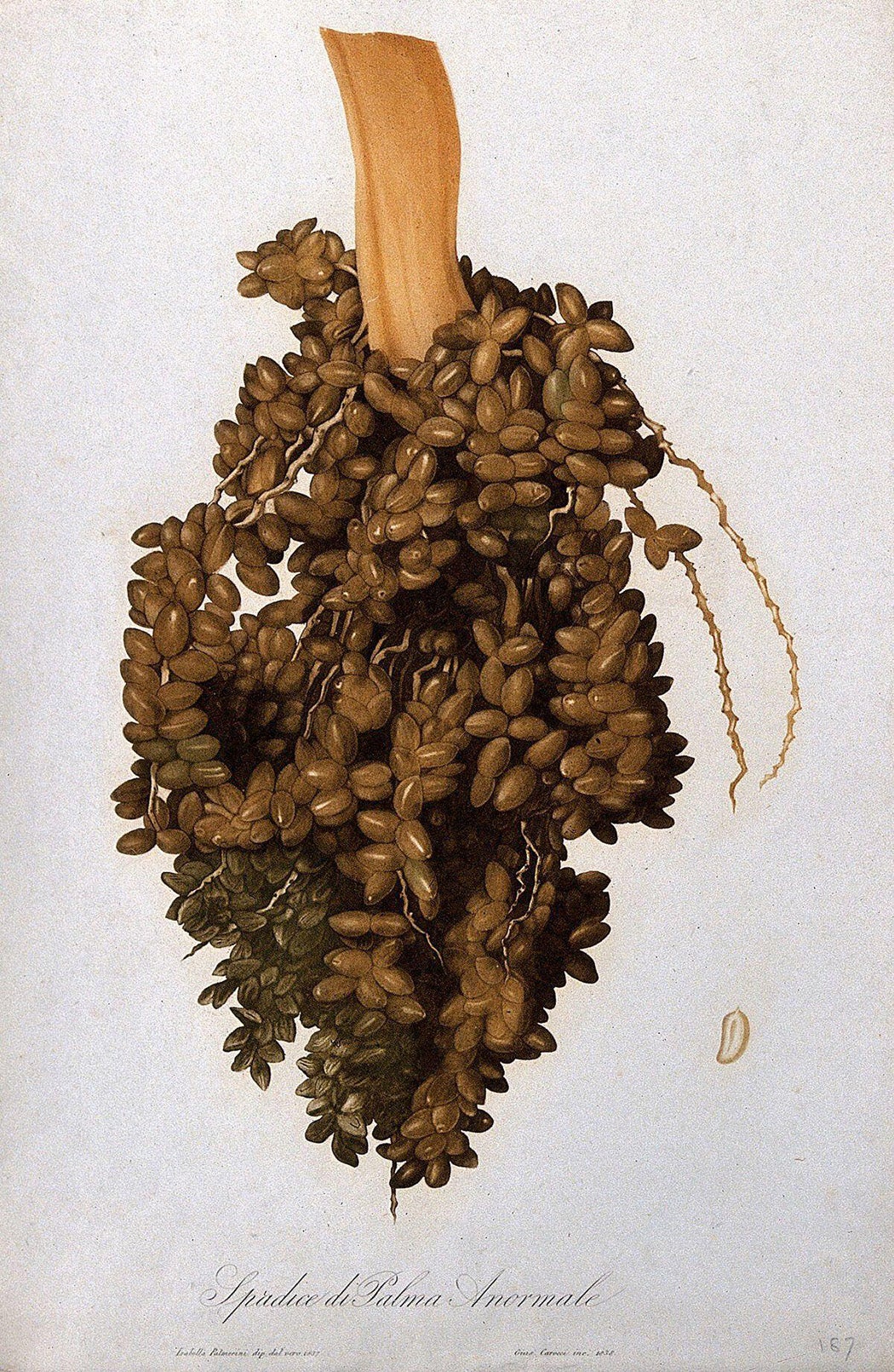
Greek and Roman writers praised Judean dates, and Plutarch (46–120 CE) reports that Mark Antony gave Cleopatra “a present of no slight or insignificant addition to her dominions, namely, Phoenicia, Coele Syria, Cyprus, and a large part of Cilicia; and still further, the balsam-producing part of Judaea,” a region the historian Flavius Josephus (37-100 CE) reports “bears also palm trees, both many in number and those excellent in their kind.” After the first Roman Emperor Augustus (63 BCE–19 CE) defeated Antony and Cleopatra at Actium in 31 BCE, he made Herod his client-king in Judea, and, in thanks, Herod sent Augustus his favorite Judean dates as gifts. In fact, Judean and other date varieties were “exported throughout the Roman Empire,” traveling as far as Roman-era Colchester, northeast of London, where “uncompressed” dates have been found among the ruins of a Roman military outpost over a thousand miles from the nearest date-bearing orchards in North Africa.
Herod likely used profits from date exports to fund his extensive building program, including the coastal city of Caesarea (named for Augustus), his palaces at Masada and Jericho, and most famously to rebuild the Holy Temple in Jerusalem. Still, the Jews chafed under Roman rule and finally rebelled in 66 CE, a revolt which invited the wrath of the Roman legions led by future emperors Vespasian and his son Titus. They crushed the resistance, destroyed the Second Temple, and overwhelmed the last Jewish holdout at Masada in 74 BCE. Vespasian minted a coin to celebrate his victory; it portrayed “Judea” as a grieving woman kneeling beneath a date palm.
The orchards of Judea survived the Roman onslaught, but fell victim to “insecurity, taxation, and wantonness” under subsequent regimes. By the time the British took over after World War I, only about sixty acres of fruit-bearing date orchards remained. Starting in the 1950s, the Israeli Ministry of Agriculture and private growers began importing thousands of date palm offshoots, including descendants of Swingle’s Medjools from the US, to revive the industry in the Jordan Valley. Israel is now one of the world’s largest date exporters. Ironically, a volunteer team led by Sallon recently succeeded in coaxing several 2,000-year-old Judean date-palm seeds collected from archaelogical sites including Masada and the Qumran Caves to not only sprout, but grow into fruit-bearing trees.
Conquest, Caravans and Oases: Date Palms and the Arab/Berber Maghreb
Persistence and fecundity were key to the date palm’s spread across the Arabian Desert and the North African Sahara, some of Earth’s most inhospitable climates today. But as late as 6,000 years ago, both regions were comparatively lush and green. Then, the periodic “precessionary” tilt in the planet’s orbit moved the area out of the annual monsoon belt, and rainfall virtually disappeared. As that happened, animal and plant populations shifted range or died out, and hunter-gatherer societies either became nomadic or clustered around remaining water sources and took up one or another form of sedentary agriculture, including the cultivation of the date palm.
Indeed, the date palm made continued human habitation possible in the newly desiccated landscape. The date palms themselves provided crucial calories—“a staple food” in North African desert oases by the 1st millennium BC, according to R. Pelling—as well as pools of cool shade under the crown’s fronds. This shade created micro-climates where smaller fruit trees and ground crops could grow, while palm trunks and fences woven from fronds helped hold back the ever-encroaching sand and doubled as building materials. Even the seeds (stones) were used: as fuel.
More to Explore
Plant of the Month: Jackfruit
Yet, as Oxford anthropologist and Saharan trade specialist Judith Scheele points out, “oases are rarely self-sufficient,” and, in any event, “‘subsistence is suicidal’ in environments such as the Sahara where stability is exceptional and crises have to be expected.” Thus, “any long-term project of settlement and agriculture has to be based on a reliable surplus in order to face future hardship, or else it must include other sources of income that are independent of local conditions.”
Developing such “surpluses,” however, meant extending the cultivatable area of an oasis and its water supply. From Iran to Oman to the Sahara, commercial date palm cultivation required the digging, drilling, and upkeep of deep wells, diversion dams (to capture runoff from infrequent downpours), and/or extensive irrigation works, the latter most often in the form of qanats (the Persian term), aflāj (Omani), or foggaras (Arabic/Berber-North African), gently sloping underground aqueducts running from natural water catchments to the oases and then out to the palm stands and undercrops.
As early as the Roman Era, the Garamantes of the Libyan Fezzan oases had constructed over three miles of such foggaras, and, Scheele notes, French geographers in the 1950s recorded nearly 1,250 miles of subterranean waterworks servicing the multiple oases of the Touat in southwest Algeria; portions of Oman’s aflāj systems are still in use today, according to UNESCO. But given the small populations and limited capital of Saharan oases communities, they relied instead on enslaved labor and the profits from inter and trans-Saharan trade to finance, build, and maintain waterworks as well as the orchards.
European imperial expansion across the entire home range of the date palm in the late nineteenth and early twentieth centuries disrupted the trade networks and power relations of both the Maghreb and what the British labelled the “Middle East”—the lands between Europe and colonies in India and eastern Asia—including, after World War I, the British and French mandates over former Ottoman territories in the Levant. Historian Ross Dunn notes that both the French in their Northwest African colonies and the British pretty much everywhere else exerted considerable effort to suppress the traditional Saharan and Middle Eastern slave trade, though one or another form of slavery persisted in the Persian Gulf—including in the date plantations of Oman that supplied American and European markets—until well into the twentieth century, as historian Matthew Hopper indicates. At the same time, French, British, and Italian infrastructure development, new ports on the West African coast, the completion of the Suez Canal in 1869, and the beginnings of a railroad network into the Sahara redirected historic north–south trade through the oases network.
“Fast” Boats from Basra
On the other hand, the very same “tools of empire,” to use historian Daniel Headrick’s phrase, particularly railroads and steamships, opened up new markets for North African and Middle-Eastern date producers. Before oil transformed the Persian Gulf, pearls and dates were its main exports, the latter to India, Europe, and the United States. American merchant ships, Hopper notes, had already developed a significant trade with Oman by the mid-nineteenth century. They exchanged “cotton cloth from Massachusetts mills,” for the sticky early ripening fardh variety Americans favored for holiday baking before riding the “monsoon winds” for the “hundred-day journey home” from Muscat to New York City before Thanksgiving.
The opening of Suez, and the advent of steamships, cut travel time to New York to sixty days and “roughly doubled” the date export trade from the Persian Gulf to the US and elsewhere. Faster transit times meant merchants could also load later-ripening varieties from Basra at the head of the Gulf. “Shipping companies,” Hopper writes, even “competed in an annual ‘date race’ from Basra to New York” (over 8,500 miles), with the winner earning a substantial bonus (as high as $120,000 in 1912). According to Eran Segal, during the 1930s, Basra was providing “85 percent of the world date supply,” and US imports alone had grown from “an average of 10 to 20 million pounds annually between 1893 and 1903” to a high of “nearly 79 million pounds in 1925,” Hopper writes.
Building an American Date Industry
While American consumers conveniently overlooked the fact that the Omani dates were harvested by enslaved Africans (if they were aware at all), domestic date growers in the nascent industry were highly attuned to the burgeoning demand.
That “industry” had gotten off to a shaky start, according to Colley, as “lack of experience, negligence and carelessness,” and in one case hungry gophers, had doomed many experimental plantings even after the USDA began distributing offshoots in the 1890s. Over the next years, however, as Swingle and others began publishing authoritative bulletins on the proper care, cultivation, and marketing of dates, the more dedicated growers began to manage a difficult and labor-intensive crop. They had to master several thousand years of experience in the span of a few years: how to transplant, space, and irrigate offshoots; how best to artificially fertilize female palms; how and when to thin out the newly emergent fruits to balance size and volume; how to protect fruit bundles from birds and potentially destructive late season rains; how and when to harvest for maximum marketability; and finally, how to process, pack, and sell the dates themselves.
As growers improved their skill set and expanded acreage, Southern California date production went from only “a few hundred pounds” in 1909 to over “one million pounds” from about “100,000 palms” by 1929, according to Colley. Still, growers struggled to find a reliable domestic market, due to competition from imports of fancy, well-packaged dates and from cheaper bulk dates favored for use in baking and candy manufacture. The one cent per pound duty on bulk dates in the Tariff Act of 1922 had done little to curb imports from Iraq, so Coachella growers hired a lobbyist to convince Washington to raise the tariffs to 7.5 cents for packaged dates and 2 cents/lb. on pitted bulk dates in the Smoot-Hawley Tariff Act of 1930. The higher tariff boosted the prospects of domestic producers, but it was the onset of World War II, which cut off imports entirely, that finally made the domestic industry a success.
The war brought an influx of military personnel and defense industry workers to Southern California. Many of them stayed after the war ended, creating a market for locally-produced dates and other produce. Coachella date farmers built roadside outlets to cater to visitors, and, in 1947, local boosters organized the first Riverside County Fair and National Date Festival to promote both their goods and tourism. It brought thousands of additional visitors to the region. According to historian Sarah Seekatz, the festival featured Arabian-themed stages, personnel dressed as “sheiks” and “harem girls,” camel races, and a Queen Scheherazade beauty pageant—a wholesale exploitation of stereotypes about the Middle East to promote the local industry.
While the 1970s oil crisis, two Gulf Wars, and the events of September 11, 2001, collectively reshaped the image of the Middle East in US culture, the annual festival still relies on many of those same tropes. Though the fair attracts upwards of 250,000 visitors each year, the US date industry itself has not fulfilled its founders’ hopes; they dreamed of success akin to that of California’s citrus and avocado industries. Instead, Americans consume fewer dates per capita now than they did a century ago, though changing demographics and renewed focus on healthy eating may yet portend a brighter future.
